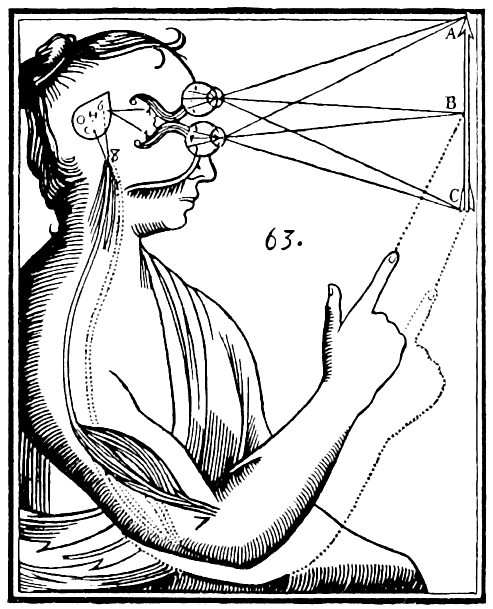Mind and matter in the posthuman condition

A big part of the motivation behind researching the aesthetic responses to ‘the posthuman condition’ is the increasing intertwinement of biological finality with machine automation. All around us, indeed in us, machines and artificial technologies are interacting directly with the tissue of organic life in ways previously unseen. Our bodies move around in cities far removed from any sort of naturally engaged existence, we are simultaneously present in several locations at once through digital and social media, and our consciousness extend not so much from an embodied function of autonomous cognition as from interdependent device-driven experiences and information systems; virtual reality is not, as is becoming well known, just another device.
It would seem, then, that Descartes’ famous cogito may be losing its hold as the place of autonomous human existence, as it indeed perhaps has been losing gradually for centuries. Autonomous cognition has been splintered into a sort of connected multiplicity, further destabilizing the mind-body schism of ontological dualism. Descartes removed mind from matter, but perhaps the posthuman condition is the place where res cogitans is reunited if not with the body, then certainly with an array of simultaneous artificial interfaces, and thus made dependent on res extensa to function. A pertinent example of this could be the extreme man-machine-pairings frequently used in cases of patients with amyotrophic lateral sclerosis, who would be unable to communicate thoughts to the external world without a digital speech synthesizer. In these cases, no element of ‘humanity’, personality or thinking is ‘lost’, but they nonetheless become intertwined and networked through a digital system not biologically given to the human condition. Certainly, in a less extreme manner, most of us experience this detachment every day, as we become more and more dependent on smartphones and social media integration, and as we begin to understand ourselves as ‘naked’ or ‘incomplete’ if we are not permanently accompanied by the digital interfaces of modern technology.
Mary Shelley was perhaps the first to radicalize this divide in Frankenstein, but the aesthetic revolutions of the early twentieth-century makes the distinctions between individual, world, and technology even more apparent. Umberto Boccioni and his contemporaries articulated it by splintering reality into an explosive simultaneity of subject, form and technology, while Martin Heidegger categorized the suffusion of reality with technology as an ongoing challenging of nature. In any case, hypermodern technologies make the relation between human and world essentially a question of technology, calling for still newer aesthetic responses, most recently in the form of bioart or digital art which radicalizes the human/technology/art-divide even further.
